#shelley long icons
Text


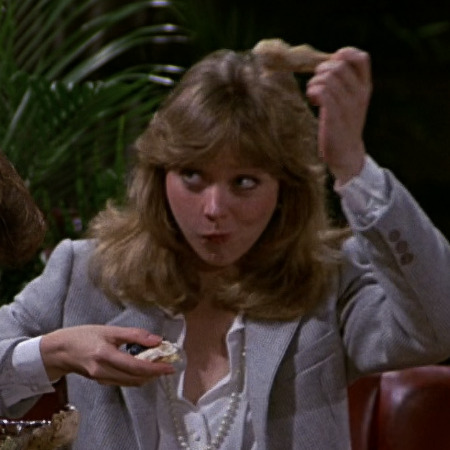



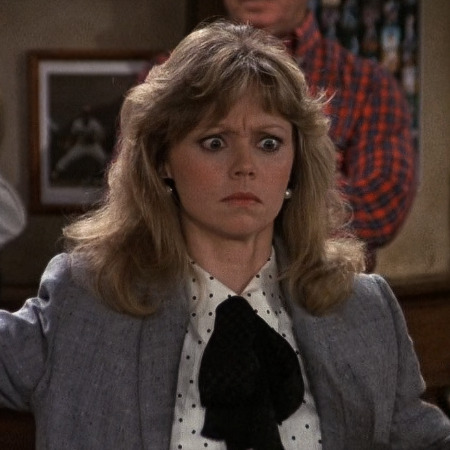

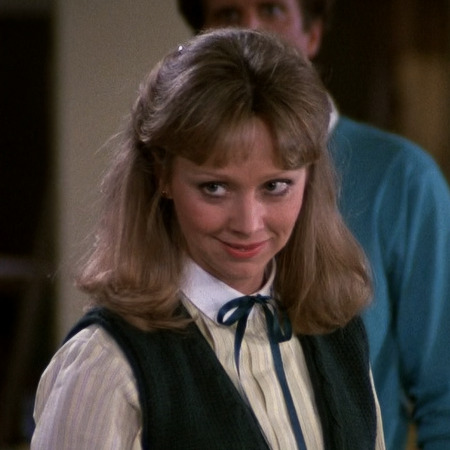
@sitcomgirI or like
#diane chambers icons#cheers icons#diane chambers#cheers#80s icons#80s#icons#sitcoms icons#sitcom icons#old tv#old sitcoms#shelley long icons#shelley long
17 notes
·
View notes
Text
Assorted Batkid Headcanons
During the middle days of Damian being Dick’s Robin, he was still figuring out how to show affection in a nonviolent way, so he just kept getting Dick fish. His logic was ‘Grayson has issues taking care of himself, so I will get him a pet that even he will find easy to care for’.
As a result Dick has an entire tank of various fish, all named Jim after Jim Gordon.
Dick finds this hilarious. Babs finds this hilarious. She’ll casually mention something ‘Jim’ did in conversation with her dad and watch as he bluescreens.
Tim has the pallet of a five year old. All he likes are exceedingly sugary sweet foods everyone else wants to puke while eating.
As a result, all he drinks are those stupidly sugary energy drinks that leave you seeing god after a few minutes. Is this unhealthy? No, it’s a liquid, therefor water, therefor good - Tim Drake.
Duke has purposefully broken his wrist to see if he would light up like a glowstick before. It didn’t work.
Cass shows her affection through objects, so a Batkid will often walk into their residence to find something like a metal bottle cap or a feather neatly placed on their table, without any security triggered or any other indication anyone was ever here. They all know to treasure these, no matter what they are.
Jason, given he’s built like a tank, will often hold things out of reach from people just to Be An Asshole. He loves it.
Damian used the same method of affection on Steph when she was his Batgirl, but had a bit more faith in her ability to not let something die, so he kept getting her small rodents, like hamsters and rats. She named them all after characters from Supernatural.
Stephanie had a huge Supernatural phase when she was 13 and never really grew out of it. She’s tried out summoning rituals from the show before.
Every single Batkid had a Warriors phase. Every. Single. One.
Dick was SO FUCKING HAPPY when Duke showed up because he finally had a brother who would happily give him a hug without having a panic attack due to TouchFuckery.
Steph has referred to the Batfam as “Furry Touchfucked McNuggets” before. No one questions it because she’s right.
Babs has designated snacks for every occasion. Program Taking Too Long To Load is Cheetos. Bruce Being a Bitchass On the Comms is popcorn. Done With This Bullshit For Good, I Swear is Twix.
Tim’s Notes app on this phone is entirely filled with sleep deprived 4am rants about why Star Trek is the superior franchise. He’s very passionate about it.
One time Bart was bored so decided to raid the pantry and he found Damian crouched on one of the top shelves, hissing like a cat and clutching a box of Weetabix. He took a picture and now it’s the YJ discord group icon.
Not exactly Batfam but the YJ Core Four + Cissie have a discord group chat and Tim’s the mod.
Damian loves Weetabix. Idk if anyone else knows what that is but that shit was my fucking childhood so he loves it.
Duke has tried and is currently trying to unionize all the kid sidekicks. They’re getting there.
Jason’s favorite authors are Mary Shelley and Jane Austen. Pride and Prejudice is his comfort book that he often reads after patrolling as way to wind down. He fucking hates Edgar Allan Poe with a passion for reasons he refuses to explain.
Cass will sometimes teach some dance moves to little kids while on patrol. Sure, she knows it’s not stopping violence, but when she sees another little girl with scars on her palms and wary eyes light up as she twirls in the air and laugh as she leaps, she thinks it’s worth it. More than worth it.
Jason’s found her doing this sometimes. Neither of them say anything.
The Batkids all love Jon. Yeah, move over Damian, don’t keep him all to yourself. They may have their own supers/alien besties, but Jon is just adorable, and they all want to smoosh the cheeks of a kid who won’t attempt to stab them for it. Look, he’s so cute. The day anyone bullies Jon beware, because the entirety of Gotham’s vigilante force will be there to wreak havoc upon you.
#batfamily#batfam#dc#dc comics#dick grayson#barbara gordon#tim drake#jason todd#cassandra cain#stephanie brown#duke thomas#damian wayne#yj#jon kent#headcanons#weetabix#glowsticks#idek man#here we are ig#random bullshit#headcanon#batfam headcanons
4K notes
·
View notes
Note
i hope this doesnt come off as rude but i thought you were the one who made the blonde twig michael shelley hc popular 😭 i distinctly remember being into tma and following you at the same time back then and it was only after you reblogged a fanart where he was spindly and claw handed and blonde when the proliferation of this exploded. fandom influencer moment (if its weird to remember back this far its entirely random i just remember being mildly annoyed bc the way he was described id imagined something like hotdogs for fingers not spindly claws)
i did used to enjoy that version of him before i grew out of that mindset and i remember having fanart of him as my icon for a bit (although idk if that one was twinky so much as just. a guy with long hair lol.) but i didn't realise i had such an impact on the fanon version of him. if i did i'm sorry women (tma fans).
119 notes
·
View notes
Text
Psycho Analysis: Manfred von Karma
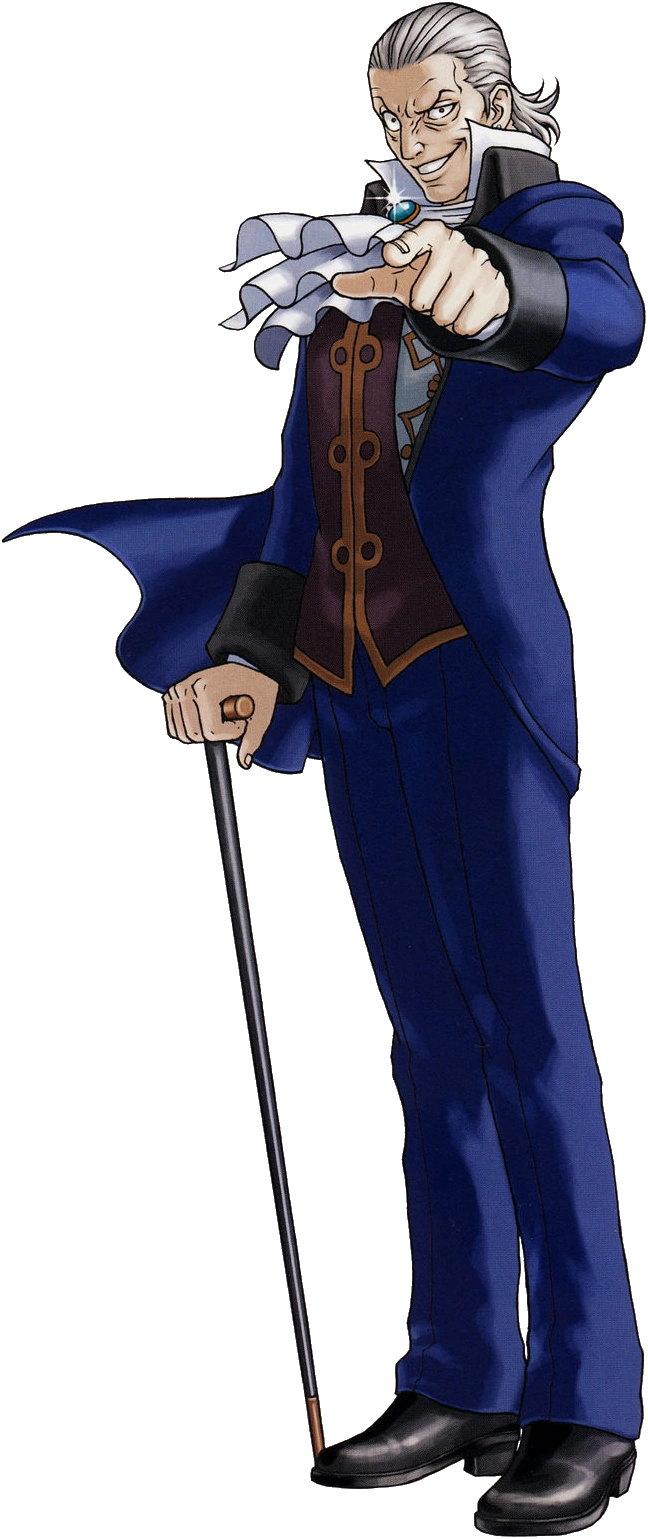
(WARNING! This analysis contains SPOILERS!)
The Ace Attorney series has no shortage of iconic prosecutors going up against Phoenix Wright in court, but most of them aren’t really Psycho Analysis material. Edgeworth, Franziska, Nahyuta, Blackquill, and even Winston Payne are all simply antagonistic and ultimately are revealed to be good people when it comes down to it, while Klavier Gavin is outright a nice guy—it is his defense attorney brother who’s an irredeemable monster. There are only a small handful of legitimately villainous prosecutors who will be covered, and one of them is the epitome of an anti-villain. But this guy here that I’m reviewing now? He is easily one of the biggest bastards in the entire franchise.
Manfred von Karma is a prosecutor obsessed with the idea of perfection, and he seeks to achieve it both in and out of the courtroom. He’s ruthless, unscrupulous, and will do anything to achieve victory, be it by manipulating and destroying evidence or orchestrating an over-complicated revenge scheme. And on top of it all, he is one of the single most important antagonists in the series; in fact, he kickstarted the entire plot with his actions.
Motivation/Goals: Von Karma is absolutely obsessed with the idea of perfection, and to this end he concocted the most absolute, perfect revenge against the family that tarnished his perfect prosecution record. Gregory Edgeworth got him penalized back in the day, so von Karma seized upon a golden opportunity and murdered him in cold blood, which turned into the DL-6 incident—something that pretty much set the stage for the whole series.
But that’s a bit too mundane for a man like von Karma, so he didn’t stop there! He took in the son of his most hated rival, warped him into becoming a ruthless prosecutor, and then on the eve of the statue of limitations running out on DL-6 manipulated events to get his protege framed for murder, be it that of Hammond or his own father. Von Karma is just incapable of settling for something simple and clean, the man wants to completely and utterly decimate the Edgeworth name’s respectability for the slight against him.
Breakdown: Befitting the final boss of the game, von Karma’s breakdown is absolutely spectacular. Once you finally reveal him as the killer of Gregory Edgeworth because of that bullet he carelessly left embedded in his shoulder, he lets out a massive screen-rumbling roar as images of DL-6 flash onscreen.
Then he smashes his head on the wall, all while ranting about Edgeworth. It is incredibly satisfying to watch this smug bastard fall apart after being so thoroughly trounced by our rookie protagonist, and it really seals the deal on Wright's character development over the course of the game alongside Edgeworth's.
youtube
Final Fate: Von Karma is in a very small pool of Ace Attorney villains we get a definitive word on the ultimate fate of, with most others only getting ambiguous demises at the hands of the judicial system or otherwise imprisonment. By the time of the third game, he is explicitly stated to be “gone from this world.” Whether he was executed, killed himself, or simply died from natural causes is of course left to your imagination, but it’s still reassuring to know the bastard is dead after everything he put the heroes through.
Evilness: On the surface, Manfred seemingly pales in comparison to later villains like multiple murderer Dahlia Hawthorne, professional killer Shelley De Killer, or international espionage master “The Phantom,” as he only ever killed a single person (albeit a very important person, with the killing done out of spite). A single murder isn’t really enough to get a high Evilness score, no matter what the reason is.
But then you think about his decades-long prosecution career where he did literally everything he could to get a conviction. How many innocent people did the Demon Prosecutor send to an early grave despite their innocence? And look at how he adopted the son of the man he killed and warped him into his antithesis just to get one over on the man who put a mark on his perfect record; that shit is beyond diabolical. That’s not even getting into how he treated his own daughter.
I think it’s honestly wild how even with all that to consider, he’s still not the most evil guy in the franchise. He’s a 9/10 on the evil scale, a truly nasty, monstrous piece of work who is theoretically responsible for dozens upon dozens of deaths of innocents, and is most definitely a warped, vindictive bastard.
Final Thoughts & Score: Von Karma is one of the best Ace Attorney villains, but I think he kind of suffers from how the game he appears in is structured. Like this dude is monumentally important to the entire plot, the whole series wouldn’t have happened at all without his actions, and yet he appears in one single case at the end of the game, which doesn’t leave a great deal of time to expand upon him the way the other prosecutors of the series get expanded on. By all accounts, he should be just as pitiful as Redd White is
The thing is, though, that von Karma manages to cram so much personality into his limited time onscreen that he becomes unforgettable for all the right reasons. Unlike White, we get several courtroom segments where we have to contend with his manipulative antics and none of the battles with him disappoint—fitting for the man who taught Miles Edgeworth. And again, unlike White, von Karma manages to have a meaningful impact and presence beyond his only appearance; his daughter is the antagonistic prosecutor of Justice For All, and he pops up in a couple of cases in the Investigations games, one of which is a flashback to the case where Gregory Edgeworth gave him his one and only penalty.
I think what really helps von Karma stand out is just how vindictive he is. Frankly, the sheer insane lengths the man goes to for his revenge is utterly disturbing for something so incredibly petty. So many killers do the deed for equally petty and self-servng reasons, but outside of Kristoph Gavin none of them are as terrifyingly shallow as von Karma and none of them go to the same insane, absurd lengths he does to crush those who he views as having wronged him. He is one of the single pettiest bitches in the entire series.
I think von Karma manages a nice 9.5/10. He’s really only held back slightly by his extremely limited screentime, but he certainly makes the most of it whenever he appears. It’s honestly pretty amazing that the first game managed to have both an excellent significant plot-relevant villain and a pathetic significant villain who barely makes a splash, but any flaws White brought to this game are easily forgotten when Manfred shows up. He’s just a great final boss, plain and simple… or he would be if it weren’t for the bonus case. But that’s a Psycho Analysis for another time.
22 notes
·
View notes
Note
Hi! If you're still doing icon requests, could you please do bigender + pansexual Michael Distorion? Thank you!

(ノ◕ヮ◕)ノ*✲゚*。⋆
[ID: A drawing of Michael Shelley aka the distortion from the magnus archives. Michael is a thin white man with a large nose, large ears, and curly long blonde hair. He’s wearing a grey coat over a purple sweater and white collared shirt. There is a slight color distortion at his edges. The background is the bigender and pansexual flag.
#the magnus archives#michael shelley#michael distortion#tma#arts#pridecons#bigender was definitively a flag with many different variants#hope this is the one you were thinking of !!
55 notes
·
View notes
Text
For Kelsey Grammer, politics and work apparently don’t mix well.
The “Frasier” star opened up about his political views, namely his support for former President Donald Trump, during a Monday interview on BBC Radio 4’s “Today” show.
After referencing actress-comedienne and Trump supporter Roseanne Barr earlier in the interview, Grammer was asked by host Justin Webb if he was still a supporter of the former president.
“I am,” Grammer said. “And I’ll let that be the end of it.”
But according to Webb, that wasn’t the end of it.
The BBC host revealed after the interview aired that Grammer had no issue discussing his support of Trump, but PR representatives from Paramount+ (which streams the “Frasier” revival) allegedly cut the interview short, according to a clip of Webb’s post-interview comments shared by Mediaite.
“I have to say, actually, Kelsey Grammer himself was perfectly happy to go on talking about it,” Webb said. “The Paramount+ PR people, less happy that he talked about it at some length so we… They decided that we’d had plenty of time for our interview. But I should stress that he was absolutely perfectly happy to talk about why he supports Donald Trump and still does in the coming election.”
USA TODAY has reached out to representatives for Grammer and Paramount+ for comment.
Grammer revived his iconic Dr. Frasier Crane character when the "Frasier" sitcom returned for a reboot in October. Dr. Crane first appeared as the preppy, obnoxious boyfriend to Diane Chambers (Shelley Long) in the Season 3 "Cheers" premiere in September 1984, turning a bit part into an indelible nine-season role.
"We knew from the first five lines that this guy was amazing because he could compete with the stellar 'Cheers' cast," James Burrows, “Frasier” director and “Cheers” co-creator, told USA TODAY in October. "Frasier was only written for a short character arc. But after the first show, we said, 'My God, we've got to keep this guy on.' We would have been blind not to see it."
10 notes
·
View notes
Note
1, 8, 10 and 43 for the bookworm ask :)
1.Name the best book you've read so far this year.
In Cold Blood by Truman Capote. Such an engrossing writing style and such an interesting book to think about in the context of the true-crime genre (which is a genre I don't really dip my toe into because the ethics of it all), as well as the fictionalisation of 'non-fiction'. Also if we're counting plays then Angels in America by Tony Kushner is GREAT.
8. Favourite Queer fiction book(s).
The locked tomb books (Tamsyn Muir) and This is How You Lose the Time War (Amad El-Mohtar & Max Gladstone). What I love about tlt is how its very essence is queer. It's not just because gay people (which I love don't get me wrong), but it's the Found Family, the exploration of love in all its forms, the gender of it all and the absence of gender of it all. It's engrained into the very fabric of the world and its themes. Time War does it similarly but it's less about character and worldbuilding and more about the style of it all - it's more about the poetry. And the poetry is gorgeous. I wrote a little something about that here if you want to check it out! I would like to read more queer lit but uni hates me
10. Favourite Classical literature
Currently obsessed with The Odyssey (Emily Wilson's translation specifically). Frankenstein is structurally brilliant and also fascinating to me. Mary Shelley is so metal for writing that at 18 and keeping her husband's heart in a chest after he died. Icon! Talked about that more on my goodreads so I won't go into it here but yes. I read Jane Eyre recently too and loved it.
43. Title of a book you own that's in the worst physical condition you have. Explain what happened to it.

It was in fact my copy of Jane Eyre and long story short, it did not survive the rain in my little tote bag :,)
5 notes
·
View notes
Note
Who are your favorite poets? :)
AHHHHHH omg I haven't been able to talk about poetry in SO long.
First, the classics. I am not huge on William Shakespeare's plays, but I do like his poetry. Oscar Wilde is just an icon. I like a lot of poems by Percy Bysshe Shelley and Emily Dickinson. I HAVE to mention Edgar Allen Poe because he's from my state but honestly, I like his overall ideas over his execution most of the time. Joyce Kilmer wrote one of my favorite poems of all time, "Trees."
Moving closer to the present day, there's Allen Ginsberg. Howl changed how I understood poetry as a whole. Shel Silverstein taught me what poetry was in the first place. I also enjoy Edward Albee and Joyce Carol Oates.
Getting into poets who are writing right now, Maggie Nelson wrote this collection of poems called Bluets that I adore. I also got to take a seminar with her through my college. Finally, I saw Cristin O'Keefe Aptowicz give a reading and she was just... mezmorizing. Honestly, poetry is meant to be performed, which is why I haven't read much since college. But if someone invites me to a poetry reading, I am so there.
My favorite collection of poems is Unleashed: Poems by Writers' Dogs. It is just what it sounds like and yes it made me sob uncontrollably by the end.
Curious to know if you or any of my other mutuals have thoughts about poetry!
6 notes
·
View notes
Text
Everybody likes to goth icon Mary Shelley but no one gives credit to her husband, poet Percy Shelley, for being haunted by his own doppelgänger all his life and then perishing in a mysterious boat accident.
What’s more gothic than your doppelgänger periodically showing up to say “How long do you expect to be content?”
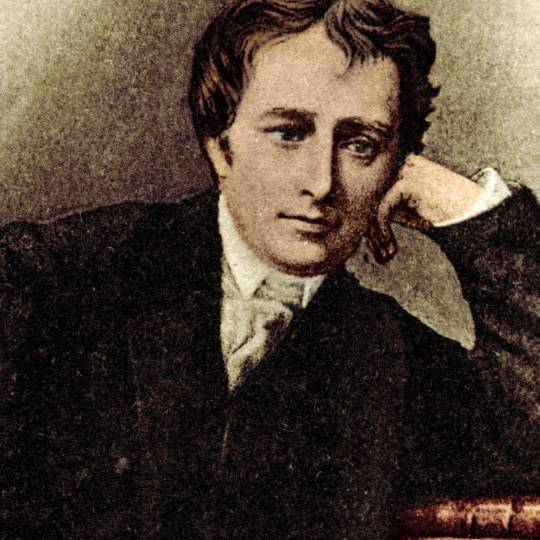
#percy shelley#mary shelley#tbh that’s what you get for abandoning your wife to run away with a teenager#frankenstein#poetry#books#literature#history#literary history#fun facts#gothic#lore#folklore#doppelganger#whitby doppelgänger#authors#poets
26 notes
·
View notes
Text
#unhallowedarts - "I spread it over centuries, and time is on my side" - Bram Stoker's Dracula
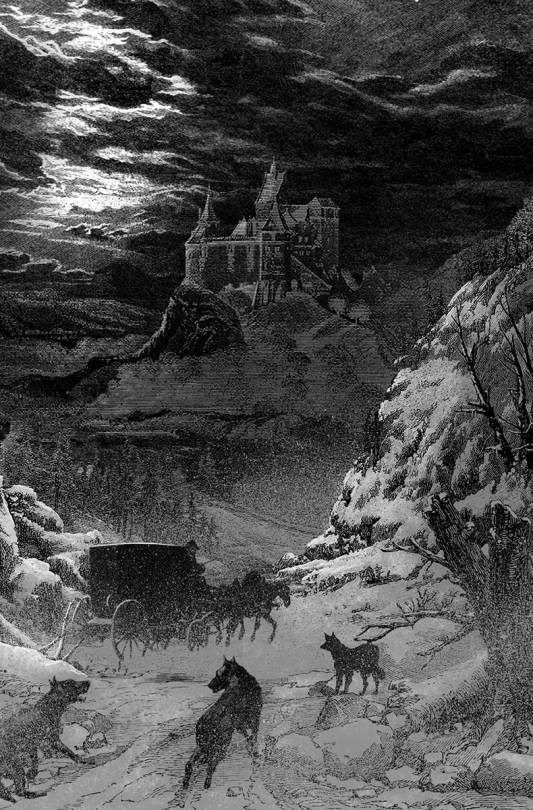
“You reason well, and your wit is bold, but you are too prejudiced. You do not let your eyes see nor your ears hear, and that which is outside your daily life is not of account to you. Do you not think that there are things which you cannot understand, and yet which are, that some people see things that others cannot? But there are things old and new which must not be contemplated by men's eyes, because they know, or think they know, some things which other men have told them. Ah, it is the fault of our science that it wants to explain all, and if it explain not, then it says there is nothing to explain. But yet we see around us every day the growth of new beliefs, which think themselves new, and which are yet but the old, which pretend to be young, like the fine ladies at the opera.“
(Bram Stoker “Dracula”)
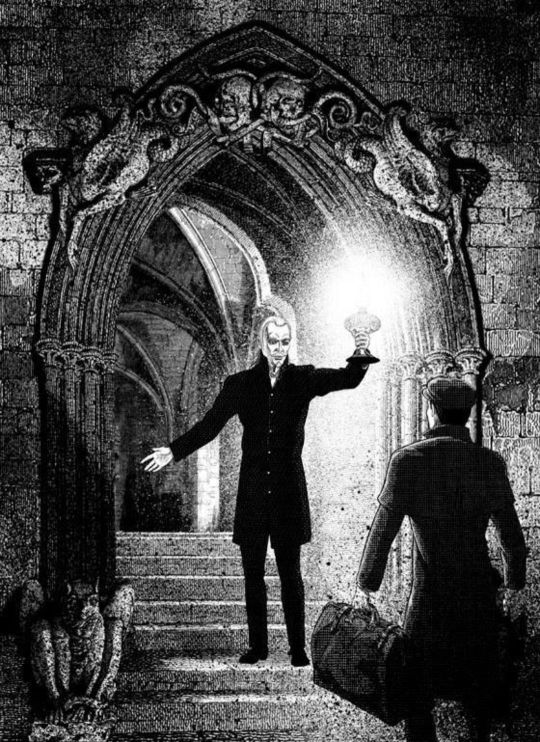
It was a indeed a dark and stormy night, the one in the year without Summer back in 1816, when the Shelleys, Byron and his physician John Polidori sat down to make pop culture history. Cut off from the world, bored witless and full to the brim with laudanum, his lordship challenged the gathered Romantic enfants perdu to lift the burden of ennui with telling ghost stories in the German fashion. And while both Byron and Shelley brought off rather nothing except consuming more narcotics that night, Mary famously began to write “Frankenstein” and Polidori engendered the other treasured dread, the aristocratic, suave, blood sucking king of the undead, the vampire. The myth itself was, of course, centuries old and only two generations before, a downright mass hysteria ran through Europe when repeated cases of vampirism were reported in the Balkans along the Austro-Turkish military border.
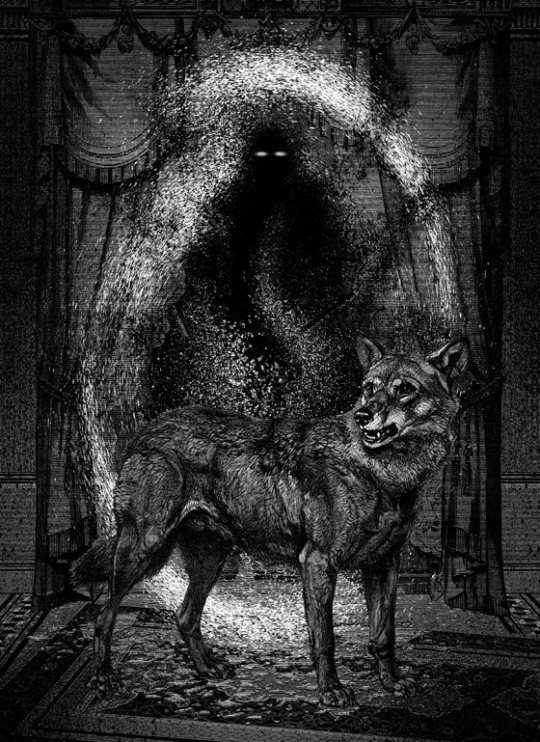
Polidori though took the revenant peasant prowling around his former home and sucking the blood of his family, clad him in evening attire and modelled him after the pattern of his employer into a Byronic hero. Polidori’s Lord Ruthven became the ancestor of the 19th and 20th century’s vampires that haunted the imaginations of countless readers and the pages of Gothic literature from the likes of Gogol and Merimee to the infamous penny dreadfuls. One of these featured a creature called “Varney the Vampire” who brought in the fangs and the tell-tale bite marks and Sheridan Le Fanu’s “Carmilla” from 1872 gave the myth the structure of a long dead noble á la Coleridge’s “Christabel” haunting a damsel in distress and a group of heroes bringing the creature to bay with the help of ancient lore and occult paraphernalia. The groundwork was laid and along came Bram Stoker.

As a child, Stoker was bedridden until the age of seven, rose as from the dead after his mysterious illness all of a sudden ceased, became a football star at college, graduated in mathematics and ended up a pen-pusher in Dublin Castle. Not satisfied with his lot, naturally, Stoker changed his career to theatre critic at the Dublin Evening Mail, owned by Sheridan Le Fanu, and attracted the attention of the famous actor Sir Henry Irving with a favourable review, the two became friends and Stoker followed Irving to become his manager. Meanwhile he had won the hand of Florence Balcombe, a celebrated beauty, courted by Stoker’s acquaintance form Trinity College Oscar Wilde as well as a host of other suitors. Stoker would bring these experiences into a literary form in his opus magnum “Dracula” with Sir Henry Irving acting as model for the undead count as Byron did for Polidori 80 years before.

Stoker had never been to Romania, during the 1890s a part of the Austro-Hungarian Empire, but he did a thorough research on his subjects that he would add with iconic effects to the imagery of the literary Gothic, from local legends of the 1750s, the late 15th century Wallachian Prince Vlad III. Drăculea who was famed in western European sources for his cruelty and other inspirations from Central Europe like Princess Eleonore von Schwarzenberg, rumoured to be a vampire during her lifetime at the beginning of the 18th century and already an inspiration for German poet Gottfried August Bürger to his poem “Leonore”. Well-known enough known to Stoker and everyone else who read and wrote Gothic literature.
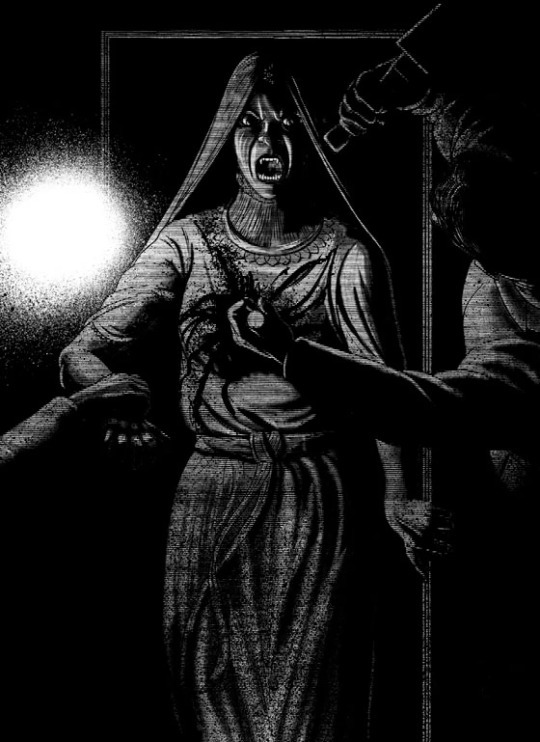
Pitting his research-wise well founded mythical Count and his ancient evil that bears strong resemblances to the feared syphilis as well as despicable moral liberties against the forces of the modern age, trains, the telegraph, typewriters, repeating rifles and established processes and organised teamwork, based on thorough research. Published in 1897, “Dracula” became an instant success and the standard followed to this day, even if Stoker and “Dracula” act only as powers behind the throne of “Urban Fantasy”.

All artwork above is by John Coulthart from his 2018 take on "Dracula" and nicked from his blog linked below
#unhallowedarts#dark art#dark literature#dark academia#gothicliterature#gothic art#victorian gothic#gothic aesthetic#bram stoker#bram stocker's dracula#dracula novel#vampire art
59 notes
·
View notes
Text
TLDR: This is a marketing tool to sell dolls
So, I finished the live-action Monster High Movie last night.
It was fine. Like everything it has its pros and cons which I will be covering.
And I don't know why this is the camel that's breaking my straws or whatever the hell-- but if I see one more hyperbolic clickbaity thumbnail or post describing why this is somehow the "worst" movie people have ever seen, I think I'm going be arrested. I've binged all of the monster high shorts, and 3D animated movies, and my brain is complete goddamn mush at this point. The live-action movie isn't even the worst thing associated with the monster high brand. Like to the veteran fans who have been here and are saying that this series used to be "better"-- What crack are you smoking, just curious? Like this series has been straight-up nonsense at points because it's meant to sell toys first and foremost. I want to highlight the whole nostalgia goggles we tend to wear and tell you what it actually is. It's bias. just call it what it is, it's bias.
There are a few different reasons why this claim of Gen3 or the live-action movie, in general, being toted as "the worst thing ever" gets under my skin. I'll be trying to engage with this movie as well as most of the marketing choices with this new line of dolls in good faith. Versus assuming every misstep or mistake is somehow an attack. During this long tangent of a post, I want everyone to repeat to themselves "this is a show meant to sell toys to children; I will not send death threats over this."
To immediately get this out of the way, if you're mad because they made Frankie Stein Nonbinary/Trans, or if they made Draculaura chubby? I'm sorry but you are beyond even my help-- get well soon.
I mostly want to address the criticism of the changed art style, personalities, dynamics, and interests of the characters themselves. I guess why this is exhausting for me because as a long-time fan of other franchises which has canon routinely altered to adhere to trends or the whim of new writers, this happens a lot.

A
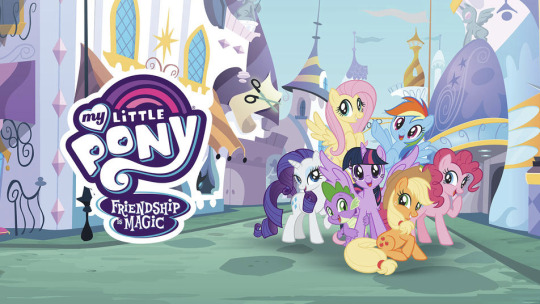
Lot

Actually

Don't even get me started on Scooby Doo.
And I've seen this trend of trying to pigeonhole each new reboot of a beloved franchise as either the "best" or "worst" thing ever. And sure enough, when a good thing like Rottmnt is there, it's canceled before anyone actually realized it was worth a second look, even though the animation and voice cast was always on point. Or in Voltron's case, while met with initial praise, it tried to please everybody, while pleasing nobody. Nobody likes change, I get it.
Personally, I wish we had fewer reboots and more of an emphasis on original projects these days, but then how would we buy dolls?
Speaking of the Monster High Dolls. One thing I find hilariously hypocritical about people criticizing the changes made to the characters complaining about "coherency" and the like-- You folks do remember that this series was made specifically to adapt horror icons from the famed Universal Monster library and Gothic Literature characters into teenagers who attend school, make out with each other and wear gaudy clothes? Like again you guys are watching a derivative of a derivative! Like Monster High is a high school AU of HG Wells, Mary Shelley, Robert Louis Stevenson, Bram Stoker, and GREEK MYTH!
I can understand the reservations to like the reboot, but I can guarantee you it's a more faithful adaptation than Winx: Fate or River Dale. It doesn't even scratch the batshit wildness that either of those series tried to pull. It's not entertainingly bad. The movie is genuinely decent. All the actors look like they wanted to be there and they all deliver their performances (especially Frankie's) with energy and charm.
Yes, the effects, costumes, and make-up are cheap, but I'd rather have cheap makeup done by unionized compensated workers with ambition than CGI everything. If anything it reminds me of my favorite made for TV Halloween movies from my childhood, like Scary Godmother or Halloweentown.
I guess what I'm trying to say, for a commercial to sell me a new line of dolls, it could have been a lot worse.
57 notes
·
View notes
Text
I feel like nobody ever talks about Stanley Kubrick and how abusive he was as a director. I am a big fan of his films but I definitely recognize his abusive behavior, so here are some questionable things he did
1. In “A Clockwork Orange” Malcolm McDowell filmed one of the most iconic films in cinema, the ludovico experiment scene. Where his character Alex, has his eyes held open and he is forced to watch violent scenes. When Kubrick showed him a reference photo for the scene, Malcom McDowell said something along the line of “hell no” but he did it anyway. As a result he has a cornias scratched which led to long term eye issues. Unfortunately Kubrick revealed that he wanted a closeup of McDowell’s eye and he had to film the scene for a second time where he ultimately scratched his Cornias for a second time.
2. Emotional Abuse to Shelley Duvall. Shelley Duvall is most iconic for her role in “The Shining” and it definitely wasn’t an easy roll for her to play. Kubrick isolated Duvall from others on set, and even convinced people not to talk to her and to ignore her. Additionally he would repeatedly yell at Duvall if she made a mistake during a scene and when Duvall would ask him for direction, he would also scream at her. This lead to severe anxiety and mental distress which resulted in Duvall’s hair to fall out in large quantities. Afterwards Duvall slowed her acting career to a stop as a result of the trauma.
3. Eyes wide shut. Stanley Kurbricks final film was “Eyes Wide Shut” starring Tom Cruise and his at the time wife Nicole Kidman. In order to create distance between Cruise and Kidman (if you’ve seen the film you would understand) Kubrick would forbid her from telling Cruise what she did on set on the days he wasn’t there. Though this isn’t as bad as the other things I felt I had to mention it considering it likely created a rift in Cruise and Kidmans relationship.
#movies#movie analysis#film#actors#television#stanley kubrick#the shining#a clockwork orange#eyes wide shut#films#horror#horror film
5 notes
·
View notes
Text
Frankenstein Adaptation Review #2: Frankenstein (1931)
Masterpost of my Frankenstein Reviews
Title: Frankenstein
Year: 1931
Medium: Film
Director: James Whale
Produced by: Universal Pictures
Synopsis/Intro
One of Universal Pictures original monster films, Frankenstein (1931) sets a precedent for many future adaptations of Shelley’s story. It is also responsible for creating many of the iconic symbols that we associate with the mythos of Frankenstein (even if those symbols have little to do with the original story.) I went in mostly blind, but was very pleasantly surprised at how much I enjoyed this film, and better appreciate the creative license it took when adapting the novel. This is the first in a long series of Frankenstein-based Universal monster movies, and I am very curious to see where the films go from here! Buckle in because this is a long one…
Grading
Faithfulness to the Source Material
First off, this film is extremely different from the book. I didn’t realize this going in, I knew there would be some differences obviously, but even just from the opening credits I was so surprised at just how different it was. Right off the bat, we establish that our main character is actually named Henry Frankenstein, and Victor takes the role of what would loosely be Henry in the novel. (Elizabeth does stay the same and I think that is very iconic of her.) I think this name swapping is really interesting, and I’m sure some film/literary scholar has a much deeper thematic analysis on this than I could write. My take is that it was a way of distancing this version of the story from the novel right from the get-go, letting audiences know before the first line of dialogue is even spoken, that this story will be a very different story from its inspiration, and your expectations of this story will be literally flipped. Henry also now has a sidekick/apprentice named Fritz, who I assume is the original version of “Igor” that we see in other adaptations (but I guess I must continue watching more movies to prove that assumption!) I won’t go through every single character here, but those to me were the stand-outs worth mentioning in my own game of spot the difference.
Like the novel, Henry is indeed a college drop-out, although here he leaves academia to create his creature, rather than as a result of his creation. This adaptation also makes our Frankenstein more open to sharing his creation with others, although he still does this begrudgingly. And in general this Henry is not too dissimilar in characterization to the novel’s Victor. They are both obsessive scientists who crave the power of great discovery, and want to overcome the state of death and create life from it. They also both put their work before their love, ignoring Elizabeth and their father in the name of their occupation and obsession. I think Frankenstein’s characterization here, although not one-to-one with the novel, does the most work of relating this film back to the novel, especially when so much else of the plot and characters are completely different. Frankenstein the novel, and Frankenstein the Universal Monster movie are two very different mythos that I am coming to understand are often conflated. I want to better understand and explain how this film created its own modern mythos, but I also want to specifically highlight that Frankenstein himself is very similar between the two.
More on that modern mythos I was talking about, this film is responsible for so much of what we today associate with Frankenstein. The lighting table hoisted into the sky to give life to the creature, the hunchbacked sidekick of Frankenstein, the very iconic “it’s alive!” line, and of course the creature design itself. Most of these are not present in the book at all, or at best are very loosely based on certain descriptions in the novel. But I also don’t hate that they exist here! The lighting table is an homage to the lighting strike that book Frankenstein witnessed as a child that helps spark (pun-intended) his interest in science. Fritz here could be interpreted as a loose allegory for Henry Clervil in the book. Frankenstein’s gleeful “it’s alive!” is also a great foil to the immediate regret and fear that book Frankenstein feels at the successful creation of his creature. I think the film pays a lot of respect to its source material while still being its own creature (once again pun-intended). “Frankenstein”, in my opinion, is a very difficult novel to 100% faithfully adapt. This version chose to completely change the story to serve its own artistic goals and resources, their goals being to create a more horror-oriented and visually-minded adaptation of Shelley’s novel. And we know they were successful because it is one of the most iconic and famous monster films of all time.
So to conclude this section, no, this film had very little accuracy to the novel, but for all the reasons above, I do think in many ways it was still a good and somewhat faithful adaptation in its own right.
Total Category Score: 7/10 points
Production Design
There is so much to say here about this film’s design, both scenically and costume-wise. Starting with the production design, this film distinguishes itself from the novel by putting our setting in a German village set at about the film's release of 1931. Obviously this is another big change from the source material, but I like this decision for two reasons. Firstly, it was probably more practical from a production/costume design perspective, because with all of the other special elements of creature creation in play, adding a period setting on top of that would have an added difficulty that would not be present by just setting it in their modern day. Secondly, I think setting this film in a modern time to its original viewers makes the horror feel more plausible and real to those original viewers. Obviously us viewers over 90 years later won’t feel the same way with this exact film, but it’s probably a similar feeling to what we feel when we watch contemporary horror films today. On the other hand, I am not a huge fan of setting this film in what I presume to be Germany. There are a few different European countries that play a role in the novel, and Frankenstein is a very German-sounding name (I don’t have the linguistics knowledge to tell if if it actually is or not), and some of the creatures time in the book is spent in Germany, so I understand where the decision probably came from. However, I still wish it was set in Switzerland instead. I think this is another way that the mythos of this film tends to overshadow the actual events of the novel, and although it is a minor point, the backdrop of the Swiss alps where Frankenstein lived and where much of the actual conflict between Frankenstein and his creature took place would have been so cool and beautiful to have from a design standpoint. And without doing more research, I don’t have the off-hand knowledge to say how accurate the design of this German town/costumes were, but as a viewer it was beautiful and it did give a strong sense of the given setting. Finally, I want to acknowledge how interesting the windmill was as a choice of setting for Frankenstein’s laboratory. Many adaptations put him in some kind of castle situation, but the windmill feels right for the setting they chose. It gives the impression that Frankenstein cobbled together this somewhat remote lab as to be far enough from the village to have privacy and a high elevation, but also still be close to home and Elizabeth for their upcoming wedding. And the imagery of this burning windmill at the film’s ending is just so epic and even gives a somewhat ambiguous ending as to if the creature was able to escape or not. Although, upon further inspection, the interior was almost entirely stone and the exterior was entirely wooden, so with this continuity error I don’t know how well it would have actually burned, but maybe that’s for me to do more historical research on. (Also I am very excited to one day visit the Frankenstein windmill restaurant that is being built in Universal’s new park in Orlando.)
And now the obvious star of the show, the costume and creature design. Another reason I like their choice of time period is because we get to see these late 20’s/early 30’s garments that tend to get forgotten for the more stereotypical 20’s and 30’s silhouettes. In particular, I was in love with every costume we see in the wedding scenes. Elizabeth’s wedding dress was so beautiful, and the way her veil/train would drape across entire rooms when she moved evoked art nouveau fashion plates which I am obsessed with. The menswear also did not disappoint, I love the outfit he changes into for the final scenes of the film with the flare-hipped breeches. I did a little bit of research and learned that although these garments were mostly associated with motorcycle policemen, they were also associated with big-game hunters, which is perfect for Frankenstein as he is attempting to literally hunt his creation in these scenes (fun fact this garment is also called a “Jodhpur”.) They are a big goofy considering he is not wearing them while horseback riding, but it makes sense thematically so it gets a pass from me.
The creature design gets its own paragraph because there is so much to unpack here. Going in to watching this film, I knew what the creature design would be. It is extremely iconic, and it is what most people associate with the character and is the basis for most adaptations after it. Conversely, because it is so iconic, I was seeing it out of its original context and I was actually not a huge fan of the design in terms of faithfulness to the novel. But now having seen the film and seeing this design in context, I think I’ve mostly changed my mind. The novel only gives us a vague description of the creature, but we know that Frankenstein built him to be beautiful but he ended up being terrifying to all that saw him. I was surprised to realize that the film's design balances this pretty well. He is obviously still grotesque, with his elongated head (a possible nod to the creature design of the 1910 silent film version), neck screws, darkened facial features and scars across his body. But he is also very well-kept and handsome in many ways. His hair is neatly and intentionally styled, the scars are symmetrical and surprisingly neat for being a bunch of separate body parts stitched together. Even his outfit, which is intentionally designed to be too small in some proportions to make him appear larger and more hulking, is a clean suit and pants. The designer has managed to give him these humanizing aspects, while still making him appear horrifying and other-worldly. And it is a testament to the genius of these design decisions that this creature’s design has stood the test of time. The only things I might have changed would be putting his screws at his temples rather than his neck, and changing out his dark t-shirt looking garment for some kind of collared shirt (only because he unintentionally looks like he’s from the 80’s, but I guess it is kind of cool that this creature dressed in trends 50 years before they actually happened.) Obviously that is me being nitpicky, but I absolutely get the obsession with this creature design now, and I am excited to see how or if it evolves in this film’s sequels.
Total Category Score: 9/10 points
Entertainment value
Despite the extensive creative liberties that this film took in adapting Shelley’s novel, I still had a great time watching it. There is always a worry with watching these old films that they will automatically be boring to a modern eye, but I don’t think this film had that issue. I was always anxious to see what Frankenstein or the creature would do next, and knowing the plot of the book, I was always surprised because the plot of the film was so different. The creature’s kill-count is much lower than in the book, here he is only responsible for killing the doctor and a young girl named Maria. The scene with the creature and Maria was one of my favorites. It was a necessary moment to show the creature’s humanity, and that it only really meant to hurt those who had antagonized him first. He accidentally and very suddenly kills the young Maria, and this is what ignites the village to hunt him down. [edit: I had a later realization that this scene parallels a scene in the book where the creature saves a young girl from drowning. It’s interesting that in both mediums, whether the creature saves her or accidentally dooms her, he is persecuted. Another example of how this movie literally flips the script of the book.] Like the novel, he is continuously misunderstood and mistreated by everyone he meets. But unlike the novel, where the young William immediately distrusts the creature, little Maria only shows him immediate kindness, and reminds us of the innocence of children. I like that the film implies that children are not born with hatred, but learn it instead, a theme that we mostly don’t see in the novel. And that’s the great thing about film adaptation, we get to explore themes and ideas that might have been glossed over or missed in the source material, and I am very glad that this film did that. And obviously the horror of this very old film will not feel the same watching it today as it would have when it was originally released, but at times I still found myself feeling the horror which was surprising.
Total Category Score: 8/10 points
Bonus Points
Character(s) included/mentioned (1 point each):
- Robert Walton and/or Henry Clerval: no.
- The DeLacey Family: no (Maria and her father are a close allegory though.)
- Justine Moritz: no.
- William and/or Ernest Frankenstein: no.
Victor(y) points (1 point each):
- Is Victor aged 18-26 years old: Yes!
- Is Victor a college dropout: Yes!
- Does Victor have an accent that is not American or British: no.
Miscellaneous (1 point each):
- Setting is primarily in Switzerland: no.
- Are there homoerotic undertones: no.
- Does the Creature have intelligence: no.
Total Category Score: 2/10 points
Final Score: 26/40 points
[Housekeeping notes: I had to change to the legacy post editor because this review was literally too long for the new editor to handle. If anyone has some tips for that let me know, in the meantime the text formatting might just look slightly different. Also I’ve been making slight review formatting changes, so I may go back and update previous posts to reflect those changes, although the content of the review will be the same. Thanks y’all!]
#frankenstein#frankenstein or the modern prometheus#mary shelley#victor frankenstein#Frankenstein movie#universal monsters#universal monsters frankenstein#movie review#frankenstein adaptation#waateeystein reviews
8 notes
·
View notes
Text
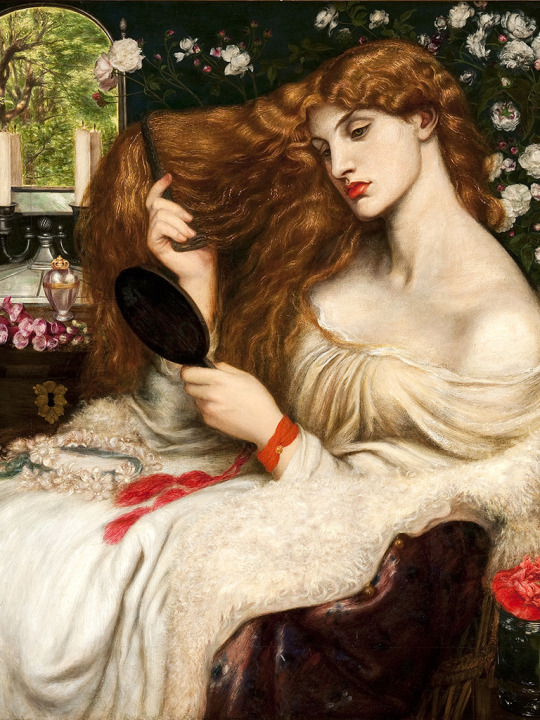
“Lady Lilith”
Painter: Dante Gabriel Rossetti
Style: Pre-Raphaelite Brotherhood, Aestheticism, Oil
Year: 1866-73
Themes: Beauty, Youth, Mythology
Notes: Lady Lilith is an oil painting by Dante Gabriel Rossetti first painted in 1866–1868 using his mistress Fanny-Cornforth as the model, then altered in 1872–73 to show the face of Alexa Wilding. The subject is Lilith, who was, according to ancient Judaic myth, "the first wife of Adam" and is associated with the seduction of men and the murder of children. She is shown as a "powerful and evil temptress" and as "an iconic, Amazon-like female with long, flowing hair."
Rossetti overpainted Cornforth's face, perhaps at the suggestion of his client, shipping magnate Frederick Richards Leyland, who displayed the painting in his drawing room with five other Rossetti "stunners." After Leyland's death, the painting was purchased by Samuel Bancroft and Bancroft's estate donated it in 1935 to the Delaware Art Museum where it is now displayed.
The painting forms a pair with Sibylla Palmifera, painted 1866–1870, also with Wilding as the model. Lady Lilithrepresents the body's beauty, according to Rossetti's sonnet inscribed on the frame. Sibylla Palmifera represents the soul's beauty, according to the Rossetti sonnet on its frame.
A large 1867 replica of Lady Lilith, painted by Rossetti in watercolor, which shows the face of Cornforth, is now owned by New York's Metropolitan Museum of Art. It has a verse from Goethe’s Faust as translated by Shelley on a label attached by Rossetti to its frame:
"Beware of her fair hair, for she excells
All women in the magic of her locks,
And when she twines them round a young man's neck
she will not ever set him free again."
More: Lady Lilith
4 notes
·
View notes
Text

I wasn't expecting to get a fourth book read this month, what with only having 4 days to go. So I decided to pick up The Villa since it was the shortest from my possible TBR I posted at the start of the month, and I figured I'd have a reasonable shot of getting through it.
Well folks, I raced through it in 2 days. I found it unbelievably readable. Hawkins' writing really pulls you through and the dual timelines - one set in the present day, one in the 70s - as well as some short extracts from other in universe works, make you feel like you can get through just one more chapter.
The present day storyline was interesting enough, the suspicious best friend, the scummy ex husband. It was all very intriguing. I was so curious where it was leading and how it would all shake out. But for me, where it really shone was the 70s storyline.
Now, thats because I'm a huge nerd about Mary Shelley and her contemporaries, and the 70s sections are all heavily inspired by the summer Mary and Percy Shelley spent with Byron, Polidori and Claire Clairmont. It's no secret that the Romantic poets, and especially the Villa Diodati gang, are of particular interest to me. Mary Shelley has long been one of my fave historical figures (hence why shes my icon here). I've read numerous books about that summer and those people. So I found the 70s chapters so enthralling and emotional. The tragedy of that group of people - both the fictional 70s musician versions, and the 19th century poets - was so beautifully written, the characters so tangible. Gotta admit I teared up more than once, and now all I feel is an insane urge to find something to read or watch about the real historic people.
#booklr#the villa#rachel hawkins#brigid speaks#read in 2023#book update#frankenbooks#(well sorta)#god i could cry rn just thinkin about the shelleys#also shoutout to my lemon tree which usually is full of lemons and would look really good with this book#but ofc its no longer lemon season when i read it so theres like 2 very sad looking lemons on the tree
2 notes
·
View notes
Text
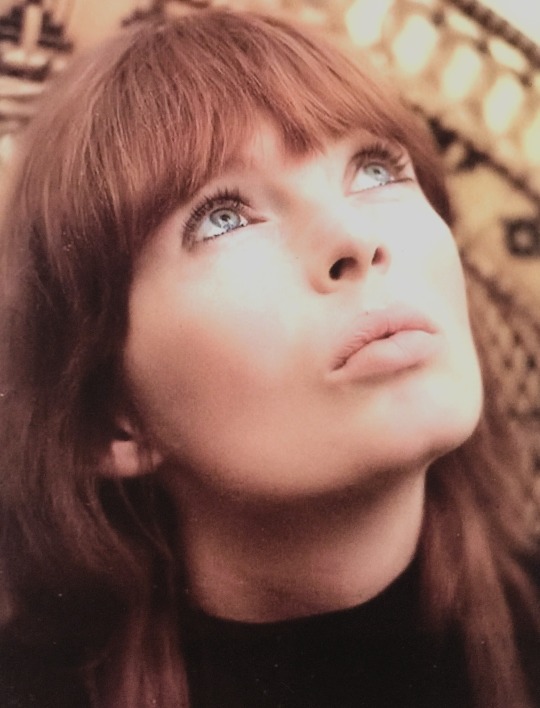
“Nico spent her nights in the desert with the number one rock star who taught her how to write songs and read to her Coleridge, Shelley and Blake. Their affair, a torrid mixture of drinks, drugs, fights and poetry readings, didn't last long before this Adam and Eve left the garden of Eden without any god's bidding and drifted down their separate roads to hell. They were tired of each other, little more than that, they were exhausted by each other's titanic demands. Aside from the authority she had received to compose, and the slanted introduction to English poetry, she kept two prevailing souvenirs of her liaison: his blood in hers, and red hair. “He had a fetish for red-haired shanties, you know, Irish shanties. I was so much in love with him that I made my hair red after a while. I wanted to please his taste. It was silly, wasn't it? Like a teenager. He was the first man I was in love with, and that is how love goes, right?” She kept her hair tinted pale red until she died.”
— Richard Witts, on Nico's relationship with Jim Morrison, from “Nico: The Life and Lies of an Icon”.
50 notes
·
View notes